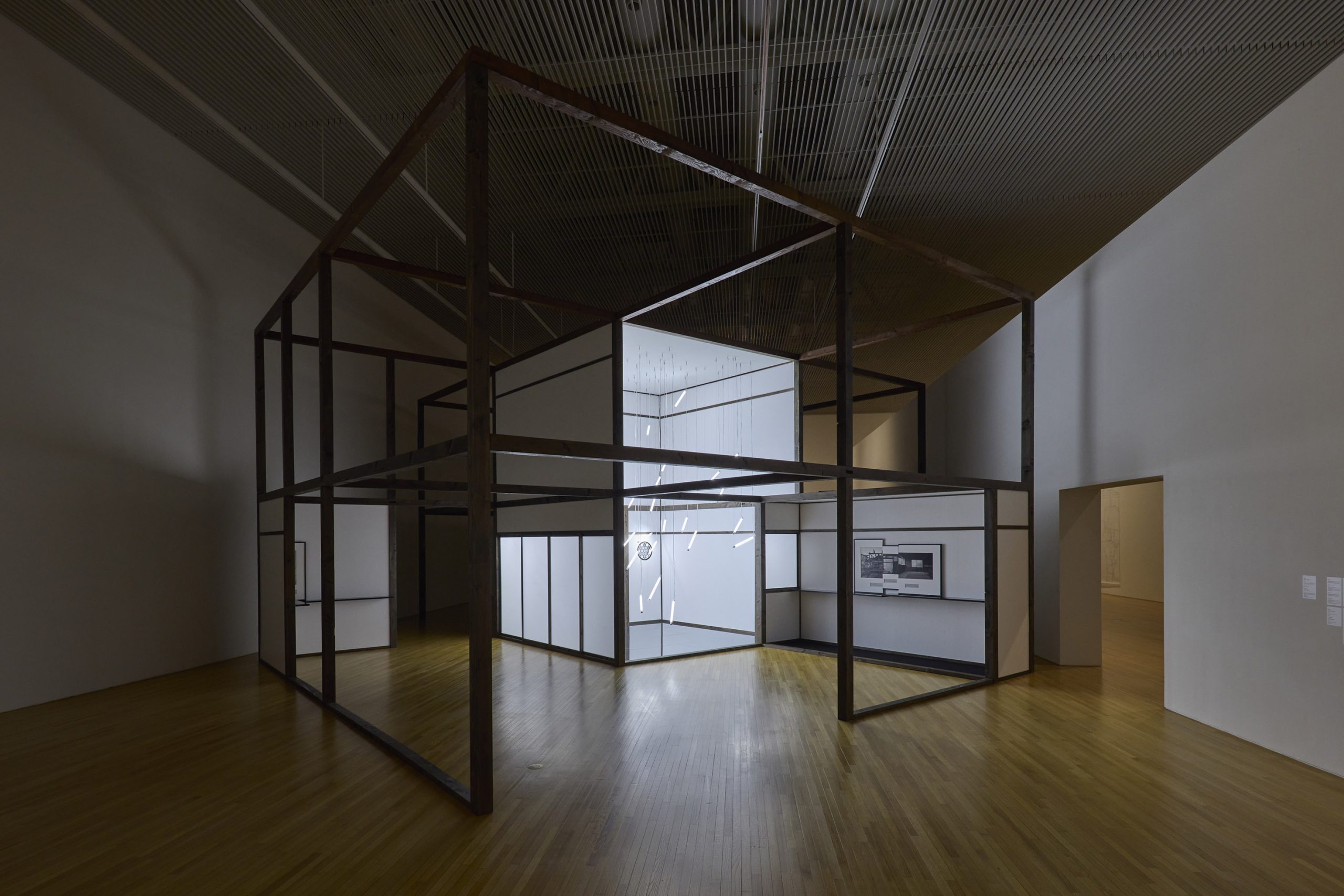
Japanese Houses, 2024
Installation view of Home Sweet Home, Marugame Genichiro-Inokuma Museum of Contemporary Art, Kagawa, 2024-2025, Photo by Kenji Takahashi
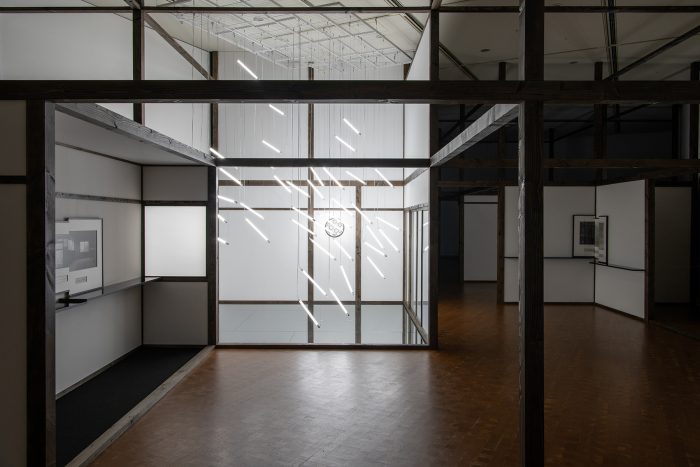
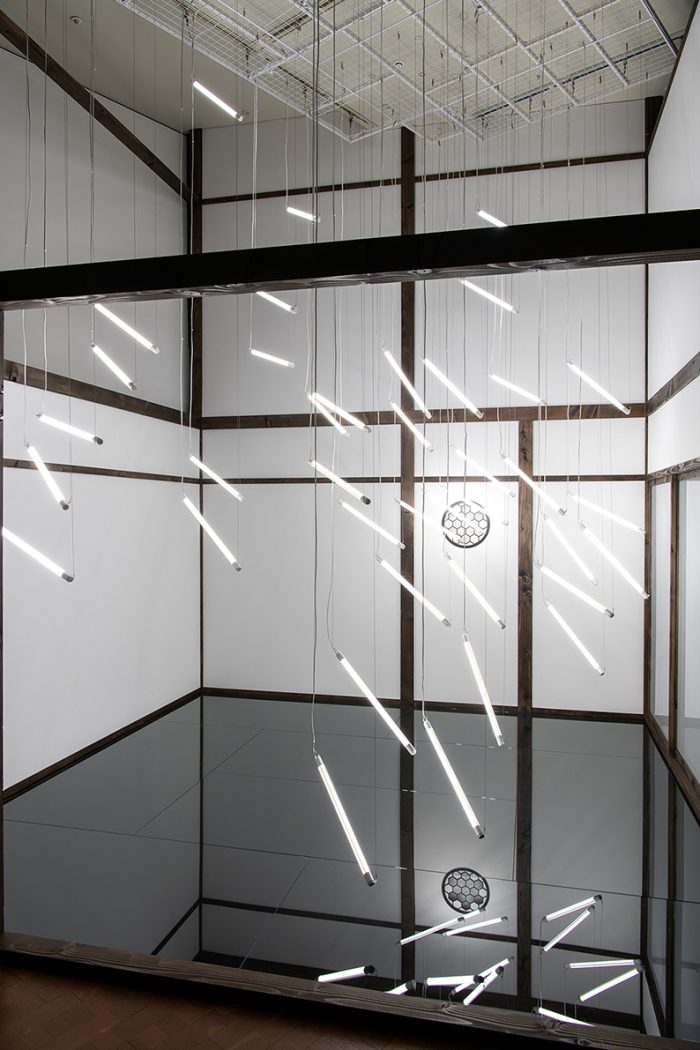
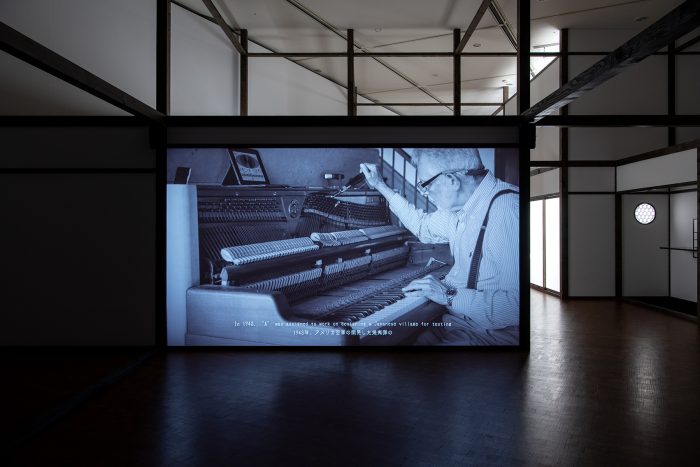
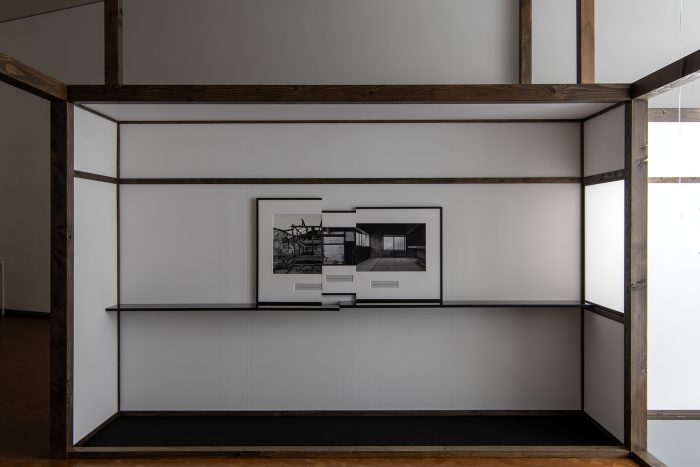


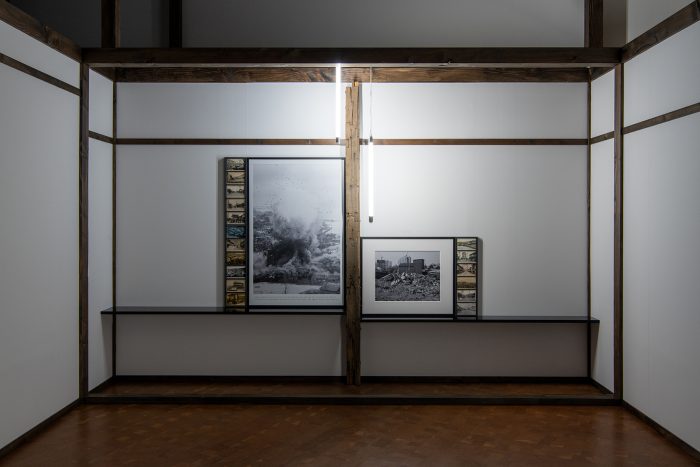
Japanese Houses, サイズ可変, 2023, 木材、アクリル板、インクジェットプリント、障子紙、ガラス、蛍光灯、1930年代に韓国仁川に建設された日本家屋の部材、絵葉書、鉄、ワイヤー、シングルプロジェクション
施工:スーパー・ファクトリー 構造設計:原﨑寛明+星野千絵/CHA
Japanese Houses
2023
Wood, acrylic, inkjet print, shoji paper, glass, fluorescent lamp, parts of a Japanese house built in Incheon, Korea in the 1930s, postcards, steel, wire, single channel video(Full HD, color, sound)
Dimensions variable
Collection of the artist
Construction: Super Factory
Structural design: Hiroaki Harasaki+Chie Hoshino/CHA
Yusuke Kamata Japanese Houses, 2023
Installation view of the exhibition “Home Sweet Home” at the National Museum of Art, Osaka, 2023
Photo by Kazuo Fukunaga
鎌田は、日本家屋を題材とするプロジェクト「The House」を継続的に実施している。 1910年から1945年までに日本国外に建てられた日本家屋を、フィールドワークなどによるリサーチを行い、立体や写真、映像を用いて美術、建築、歴史的事象などを現在と交差させる作品を展開している。 かつて日本の植民地であった台湾、朝鮮半島には今も日本家屋が残る。またブラジルには日本人移民により建てられた日本家屋が残る。半世紀から1世紀近くの時を経て、建物の状況は様々で、そこに住まう人も変わり、住民の文化に応じた変容が見られる。 本展のために制作された新作(Japanese Houses)(2023年)では、日本家屋の間取りを展示室に再現し、韓国で実際に家屋の一部に用いられていた部材や作家自ら撮影した写真、資料写真や日本家屋のポストカード等も展示。また日本でも活躍した建築家、アントニン・レーモンドにまつわる映像作品も展示している。日本家屋に造詣が深かったレーモンドは、かつてアメリカが実施した焼夷弾実験に協力したが、戦後はヤマハのピアノのデザインや建築設計等を通じて復興の一助となるべく活動した。作品中に吊るされた蛍光灯は38本で、これは焼夷弾1基あたりの子弾の数でもある。会場に流れるピアノの調律とそこに重なる不協和音の音が、忘れ去られようとする現代日本の歴史の欠片が充満する空間に充ちる。
Yusuke Kamata Yusuke Kamata was born in 1984 in Kanagawa. He earned an MFA in Intermedia Art from Tokyo University of the Arts, and is currently based in Fukuoka. Kamata is engaged in an ongoing project called The House, which focuses on Japanese houses. He carries out fieldwork and research on Japanese houses built overseas between 1910 and 1945, and produces three-dimensional works, photography, and video in which art, architecture, and historical events intersect with the present. Japanese houses remain today in the former colonies of Taiwan and the Korean Peninsula, and in Brazil there are Japanese-style houses built by immigrants from Japan. After periods of time ranging from half a century to nearly a century, the condition of these structures varies, occupants have changed, and transformations have taken place in line with the local culture. In his new work Japanese Houses (2023), created for this exhibition, Kamata recreates the floor plans of Japanese houses in the gallery, which he presents alongside historical materials such as structural components actually used in a house in South Korea, photographs he took, archival photographs, and postcards featuring Japanese houses. Also on view is a video piece focusing on the architect Antonin Raymond, who was active in Japan. Deeply versed in Japanese houses, Raymond at one point cooperated with US incendiary bomb experiments, but after World War II he contributed to Japan’s recovery effort, designing Yamaha pianos and architectural projects. Kamata’s installation incorporates 38 fluorescent lights, equal to the number of bomblets scattered by a single incendiary bomb. The sound of a piano being tuned blend with dissonant tones, filling a space packed with fragmentary reminders of modern Japanese history that is progressively fading into oblivion.